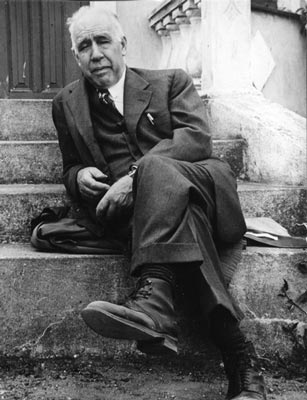Brian Clegg reviews Beyond Weird: Why Everything You Thought You Knew About Quantum Physics is Different by Philip Ball

Everybody knows that quantum physics is weird, right? Indeed, quantum physicist Richard Feynman once said in a lecture: “The theory of quantum electrodynamics describes Nature as absurd from the point of view of common sense. And it agrees fully with experiment. So I hope you can accept Nature as she is – absurd.” Beyond Weird: Why Everything You Thought You Knew About Quantum Physics is Different presents a refreshing challenge to this viewpoint. In the book, science writer Philip Ball dares to take on Feynman, the closest thing physicists have to a patron saint, and suggests that we need to rethink that “weird” label.
It’s not that the author denies the existence of the strange phenomena of quantum theory. He simply points out that there’s nothing truly weird about it – this is just how nature is. Instead, Ball suggests that we perceive quantum physics as strange and mysterious because we are misled by our everyday experience. The weirdness is in our understanding, not in nature.
If this distinction seems worryingly philosophical, be prepared for a bumpy ride. Where most popular quantum physics books concentrate on the science and its applications, the core of Beyond Weird is the interpretation(s) of quantum mechanics, and that inevitably involves philosophy. It’s not that Ball ignores the science – his description of the Schrödinger equation and the wave function is one of the best I’ve seen in popular writing – but we are provided with this as background to interpretation.
Philosophy is not always popular in physics circles. Infamously, Stephen Hawking and Leonard Mlodinow in The Grand Design proclaimed that philosophy was dead, and that the serious questions that used to be the remit of philosophy are now in the hands of science. However, when it comes to getting a feel for quantum physics, Ball suggests that we can’t ignore the philosophers. The description of the difference between quantum theory and reality covered in Beyond Weird parallels Kant’s idea of the Ding an sich – an inaccessible underlying reality that we can only model through the results of our experience.
So, we are told, familiar concepts of the quantum world such as wave–particle duality and superposition – where a quantum object appears to be in more than one place at a time – do not describe the true nature of quantum objects. In fact, we can’t know what that really is. It’s not that a quantum object is sometimes a wave and sometimes a particle, but never both simultaneously. Instead, the way we perceive the object in our experiments will be one or the other. Quantum physics, it seems, is all about perception and information, not reality.

The Bohr paradox
This approach is suggestive of the “shut up and calculate” school where, instead of worrying about what’s “really’” happening, you simply apply the maths. If we can never know what really lies beneath, what is the point of constructing interpretative models? Ball shows us that there is a lot we probably need to agree with in the traditional Copenhagen interpretation of quantum mechanics formulated by Niels Bohr and Werner Heisenberg in the 1920s. This probabilistic interpretation of quantum mechanics suggests that the observable properties of a particle do not have definite values until they are measured. But Ball also shows that there are multiple interpretations of this itself, as there was never a formal definition of the Copenhagen interpretation and the two scientists themselves had rather different ideas, meaning that it too is incomplete and ultimately, unsatisfying.
Why, Ball asks, does quantum physics, uniquely, need interpretations? None of these attempts to provide a bridge between the highly-successful mathematical models such as Schrödinger’s equation, and what is observed, is ideal. They all fall down, irrespective of whether someone supports the science fiction-like “many worlds interpretation” – the idea that every outcome of a quantum decision takes place in a parallel world system, which Ball argues is counter-scientific – or David Bohm’s universal interconnectedness; or more modern attempts.
The difficulty of interpretation is also not helped by the degree to which the fundamentals of quantum physics were plucked out of the air. As Ball tells us, “It was a hugely abstract and intellectual exercise, relying on informed guesswork to an extent we might consider both impressive and alarming.” The mathematical models match what was later observed impressively well, but it’s alarming considering we have no good reason for expecting these mathematical models to work.
The key to understanding the confusion caused by quantum theory, may be to consider information
The key to understanding the confusion caused by quantum theory, may be to consider information, suggests Ball. It seems that as quantum objects interact with their surroundings, they lose their quantum uniqueness. In this decoherence process, they go from a collection of probabilities to having measured values. In this picture, quantum phenomena are largely about transfers of information.
Through the book, it becomes clear that, while the mathematics of quantum theory is highly effective, we may need to approach it differently if we are ever to get beyond the numbers to an understanding. Towards the end of the book we are presented with attempts, that are still not fully developed, to reformulate quantum physics as a series of axioms that make sense in conventional terms, while still allowing most quantum phenomena to be deduced. If this all sounds diffuse and woolly, it’s not realistic to expect Ball to be able to make everything that is described as “quantum weirdness” go away. Rather, what he successfully does is to enable the reader to look at quantum physics in a different light, where these oddities become less challenging.
The only real negative about Beyond Weird, past a tendency to make the brain hurt, is the way that the book is set up as a series of challenges to “everything you thought you knew about quantum physics”. Ball is an urbane writer and the aggressive challenging adopted here sits uncomfortably with his usual style. This comes across particularly strongly in the early parts of the book, where page after page is taken up telling us that quantum physics isn’t really weird like we thought it was, but that it is merely surprising. Thankfully, this early confrontational tendency fades later, and should not take away from the fact that this is the most original and interesting book on quantum physics for the general public in a long while.
- 2017 Bodley Head 384pp £17.99hb



